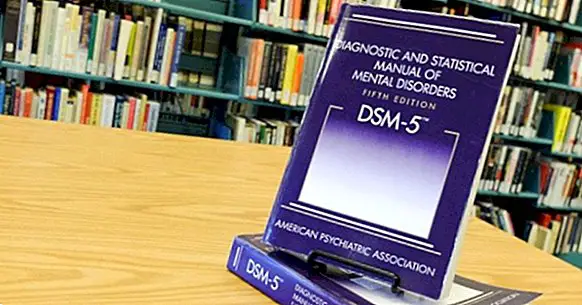Personality Disorders in the DSM-5: disputes in the classification system
The different updates published by the American Psychiatric Assotiation that have been compiling the versions of the Diagnostic and Statistical Manual of Mental Disorders have been object of criticism and discrepancies in a traditional way. Although each new publication has tried to achieve a higher consensus index among experts, the truth is that the existence of a sector of the psychology and psychiatry professional community can not be denied. shows its reservations about this classification system of mental pathologies .
With regard to the most current versions of the DSM (DSM-IV TR of 2000 and DSM-5 of 2013), several renowned authors such as Echeburúa, from the University of the Basque Country, have already demonstrated the controversial of the classification of Personality Disorders (TP) in the predecessor to the current manual, the DSM-IV-TR. Thus, in one work with Esbec (2011) have shown the need to carry out a complete reformulation of both diagnostic nosologies and the criteria to include for each of them. According to the authors, this process could have a positive effect on an increase in the validity indexes of the diagnoses as well as a reduction in the overlap of multiple diagnoses applied to the clinical population.
- Related article: "The 10 types of Personality Disorders"
Problems of Classification of Personality Disorders in the DSM 5
In addition to Echeburúa, other experts in the field such as Rodríguez-Testal et al. (2014) claim that there are various elements that, despite providing little theoretical support, have been kept in step from DSM-IV-TR to DSM-5 , as for example the categorial methodology in three groups of personality disorders (the so-called clusters), instead of opting for a more dimensional approximation where scales of symptomatic severity or intensity are added.
The authors affirm the presence of problems in the operative definition of each diagnostic label arguing that in various entities there is a significant overlap between some of the criteria included in certain mental disorders included in Axis I of the manual, as well as the heterogeneity of profiles that can be obtained in the clinical population under a common diagnosis.
The latter is due to the fact that the DSM requires compliance with a minimum number of criteria (half plus one) but does not indicate any as necessarily mandatory. More specifically, a great correspondence has been found between Schizotypal Personality Disorder and Schizophrenia; between Paranoid Personality Disorder and Delirious Disorder; between Personality Disorder and Mood Disorders; Obsessive-Compulsive Personality Disorder and Obsessive-Compulsive Disorder, mainly.
On the other hand, it is very complex to establish the differentiation between the continuum of marked personality trait (normality) and the extreme and pathological personality trait (personality disorder). Even specifying that there must be a significant functional deterioration in the personal and social performance of the individual, as well as the manifestation of a stable psychological and behavioral repertoire over time of an inflexible and maladaptive nature, it is difficult and complex to identify which population profiles belong to the first category or the second.
Another important point refers to the validity indexes obtained in the scientific investigations that support this classification. Simply, no studies supporting this data have been carried out , just as the differentiation between the clusters (conglomerates A, B and C) does not seem justified:

In addition, as regards the correspondence between the descriptions given to each diagnosis of Personality Disorders, they do not maintain sufficient correspondence with the signs observed in the clinical patients in consultation, as well as overlapping clinical pictures that are excessively wide. The result of all this is the over-diagnosis , a phenomenon that has a harmful and stigmatizing effect for the patient himself, in addition to complications at the level of communication among professionals in the field of mental health that serves the said clinical group.
Finally, it seems that there is not enough scientific rigor to validate the temporary stability of some personality traits . For example, research indicates that the typical symptoms of TP of cluster B tend to decrease over time, while the signs of TP of cluster A and C tend to increase.
Proposals to improve the TP classification system
In order to resolve some of the difficulties described, Tyrer and Johnson (1996) had already proposed a system that added to the previous traditional methodology a graded assessment a couple of decades ago. to establish more specifically the severity of the presence of a Personality Disorder :
- Accentuation of personality traits without being considered TP.
- Simple personality disorder (one or two TP of the same cluster).
- Complex personality disorder (two or more TP of different cluster).
- Severe personality disorder (in addition there is a great social dysfunction).
Another type of measure addressed in the meetings of the APA during the preparation of the final version of the DSM-5, consisted in considering the inclusion of six more specific personality domains (negative emotionality, introversion, antagonism, disinhibition, compulsivity and schizotypy) specified from 37 more concrete facets. Both the domains and the facets had to be assessed in intensity on a scale of 0-3 to ensure in more detail the presence of each feature in the individual in question.
Finally, in relation to the decrease of the overlap between diagnostic categories, the overdiagnosis and the elimination of the least supported nosologies at the theoretical level, Echeburúa and Esbec have exposed the contemplation of the APA to decrease from the ten collected in the DSM-IV -TR to five, which are described below along with their most idiosyncratic features:
1. Schizotypal Personality Disorder
Eccentricity, altered cognitive regulation, unusual perceptions, unusual beliefs, social isolation, restricted affection, avoidance of intimacy, suspicion and anxiety.
2. Antisocial / Psychopathic Personality Disorder
Insensitivity, aggression, manipulation, hostility, deception, narcissism, irresponsibility, imprudence and impulsiveness .
3. Personality Limit Disorder
Emotional lability, self-injury, fear of loss, anxiety, low self-esteem, depression, hostility, aggression, impulsivity and propensity to dissociation.
4. Evolutionary Personality Disorder
Anxiety, fear of loss, pessimism, low self-esteem, guilt or shame, avoidance of intimacy, social isolation, restricted affection, anhedonia, social detachment and aversion to risk.
5. Obsessive-Compulsive Personality Disorder
Perfectionism, rigidity, order, perseveration, anxiety, pessimism, guilt or shame , restricted affection and negativism.
In conclusion
Despite the interesting proposals described here, the DSM-V has maintained the same structure as its previous version , fact that makes persist the disagreements or problems derived from the description of the personality disorders and their diagnostic criteria. It remains to be expected if a new formulation of the manual can incorporate some of the indicated initiatives (or others that may be formulated during the elaboration process) in order to facilitate the performance of the clinical practice of the professional group of psychology and psychology in the future. psychiatry
Bibliographic references
- American Psychiatric Association (2013). Diagnostic and Statistical Manual of Mental Disorders (5th ed.). Washington, DC: Author.
- Esbec, E., and Echeburúa, E. (2011). The reformulation of personality disorders in the DSM-V. Spanish Acts of Psychiatry, 39, 1-11.
- Esbec, E., and Echeburúa, E. (2015). The hybrid model of classification of personality disorders in the DSM-5: a critical analysis. Spanish Acts of Psychiatry, 39, 1-11.
- Rodríguez Testal, J. F., Senín Calderón, C. and Perona Garcelán, S. (2014). From DSM-IV-TR to DSM-5: analysis of some changes. International Journal of Clinical and Health Psychology, 14 (September-December).




















